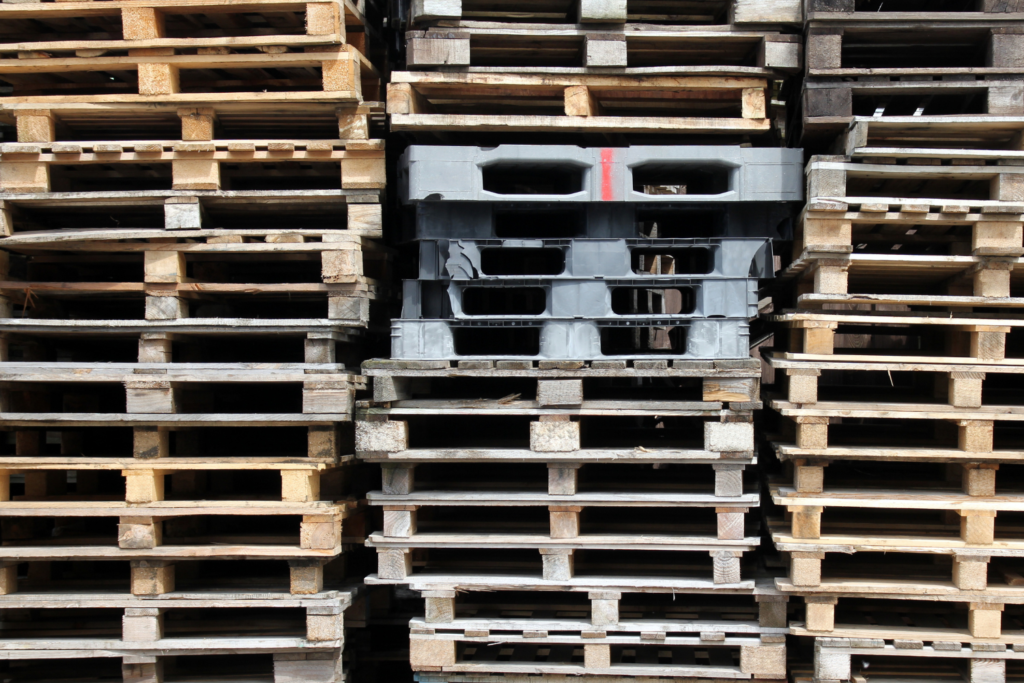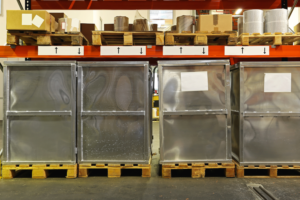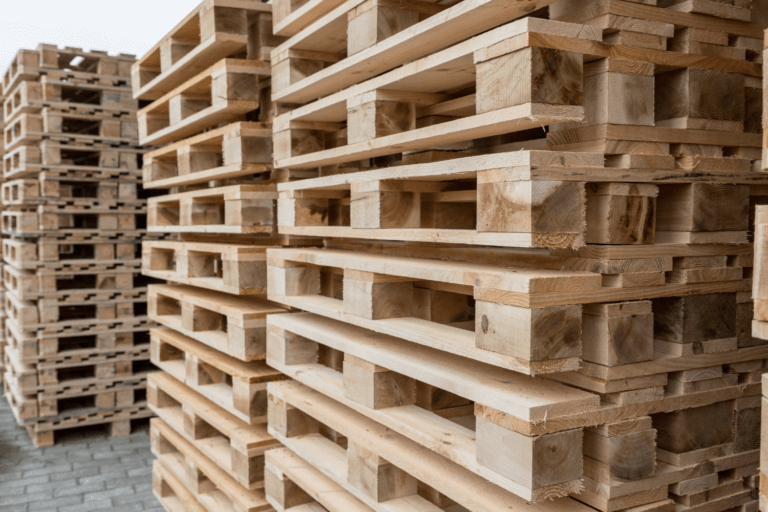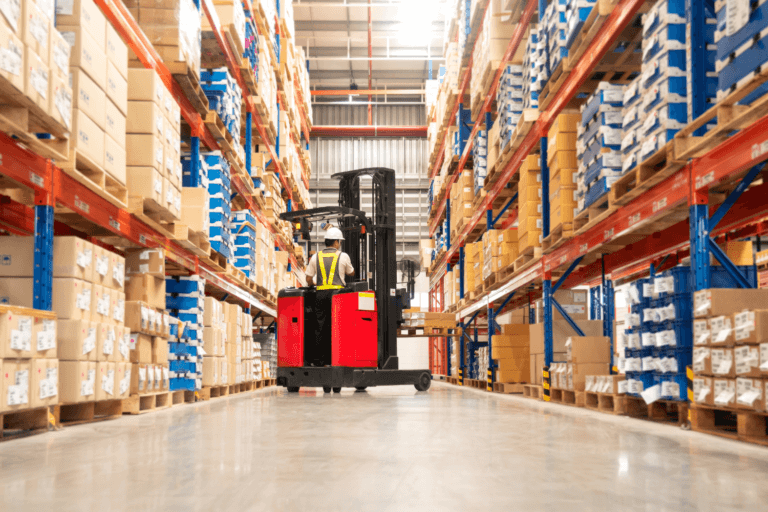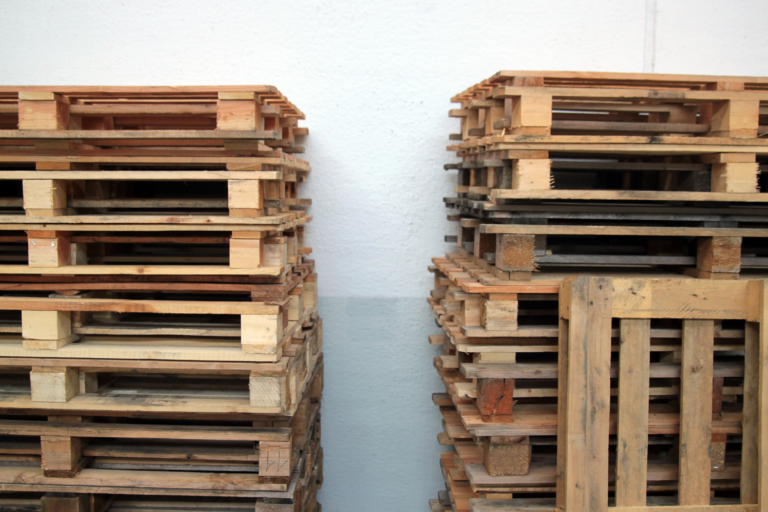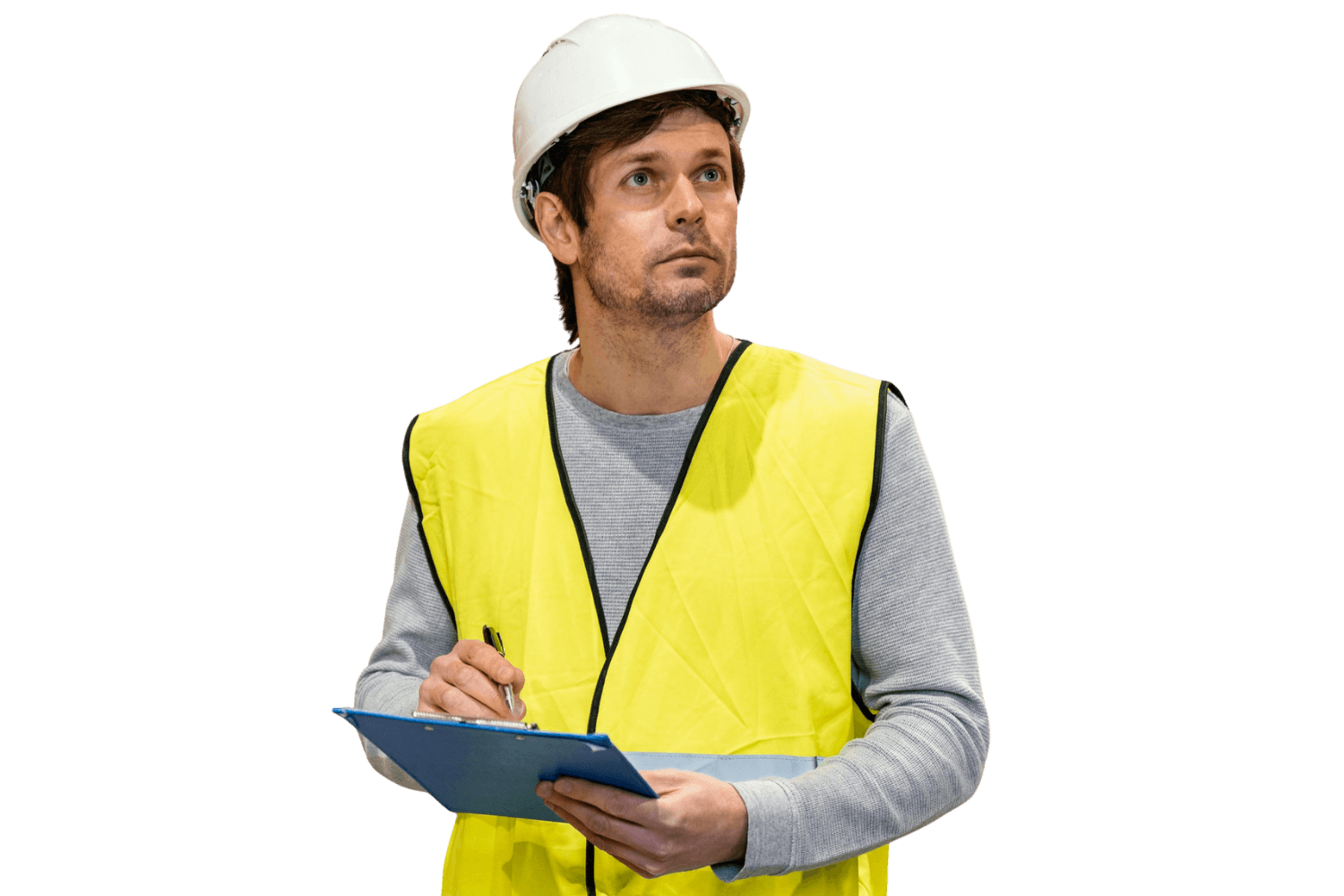Pallets are fundamental components in the world of logistics and supply chain management. In this article, we will discuss the different types of pallets.
They come in various types, each designed to fulfill specific needs based on material, region, and functionality.
Choosing the right pallet type can significantly impact everything from transportation expenses to product safety and environmental sustainability.
Below are the different types of pallets and where they are best used.
17 Types of Pallets: How to Choose the Best for Your Needs
Selecting the right type of pallet requires an understanding of the options available, your industry’s requirements, and the specific needs of your business.
Take the time to assess the different types of pallets below. Using the wrong type can lead to inefficiencies, increased costs, product damage, safety risks, and reputational harm.
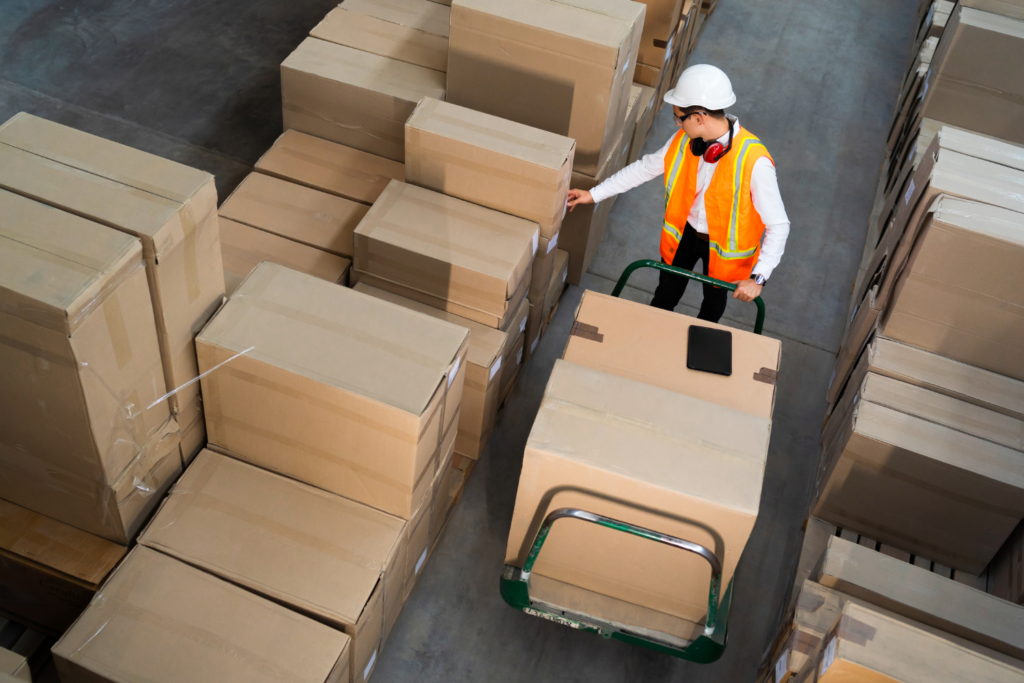
Country
The global demand for pallets has led to the standardization of specific types in various regions.
1. GMA Pallets
GMA pallets follow the specifications set by the Grocery Manufacturers Association, designed to optimize the efficiency of the supply chain.
They are ideal for automated warehouse systems and cross-company transport in North America.
They measure 48” x 40” and are constructed to be lightweight yet durable enough to support weights of up to 2,500 pounds.
2. Euro Pallets
Euro pallets are the standard pallets used in Europe and other countries that are part of the EPAL system.
They have dimensions of 1200 mm x 800 mm (about 47.2” x 31.5”) and are often made of high-quality wood to withstand heavy loads.
Material
When selecting pallets, material choice plays a role in meeting industry-specific requirements.
3. Wooden Pallets
Wooden pallets are by far the most commonly used type worldwide due to their affordability, versatility, and recyclability.
They are made from either hardwood or softwood, depending on the application.
Hardwood pallets are durable and capable of carrying heavy loads, while softwood pallets are lightweight and cost-effective.
4. Plastic Pallets
Made from high-density polyethylene (HDPE) or polypropylene (PP), plastic pallets are growing in popularity due to their durability, resistance to moisture, and ease of cleaning.
Unlike wood, they don’t splinter or absorb contaminants. They are also reusable and have a longer lifespan, which can offset their higher upfront cost.
They are available in various designs, such as nestable, rackable, and stackable, to accommodate specific needs.
5. Metal Pallets
Metal pallets are constructed from materials such as steel, aluminum, or other alloys, making them incredibly strong and long-lasting.
Steel pallets are capable of handling extremely heavy loads and are fire-resistant, so they are suitable for military, automotive, and chemical industries.
Aluminum pallets, while lighter than steel, offer corrosion resistance and high durability.

6. Recycled Pallets
Recycled pallets are an eco-friendly alternative made by refurbishing old pallets or using reclaimed wood, plastic, or composite materials.
These pallets are inspected and repaired, with the usable components salvaged to form new pallets.
This practice not only reduces waste but also cuts down on the costs of acquiring new pallets.
7. Combo Pallets
Combo pallets, also called hybrid pallets, combine new and recycled components to create a single pallet.
For instance, refurbished deck boards could be paired with new stringers or vice-versa. This approach balances cost, durability, and sustainability.
8. Paper Pallets
Paper pallets are lightweight and eco-friendly options made from corrugated cardboard or pressed fiberboard.
Despite being lightweight, they can support considerable loads and are treated to resist moisture.
They are usually designed for single-use applications or for airfreight where weight restrictions are critical.
Design
Pallets can also be categorized by design. Stringer pallets and block pallets are two prominent designs, differing mainly in how they provide structural support.
9. Stringer Pallets
Stringer pallets are constructed using two or more parallel pieces of timber, known as stringers, to support the top deck boards.
Depending on their design, they can either be two-way, which allows forklifts to access them from two sides, or four-way if they are notched.
They are more affordable than block pallets and are used in industries with standard load requirements, such as manufacturing and warehousing.

10. Block Pallets
Block pallets are constructed using nine blocks that act as their supporting structure.
This design enables forklifts and pallet jacks to access the pallets from all four sides, providing better maneuverability in warehouses.
They are typically considered stronger and more stable than stringer pallets. They are commonly used in industries that require higher weight capacities and frequent handling.
11. Custom Pallets
Custom pallets are tailor-made to meet specific size, shape, or load capacity requirements.
You can use them if you have unique shipping needs or irregularly shaped goods that don’t fit traditional pallet sizes.
They are often manufactured from a variety of materials such as wood, plastic, or metal, depending on the intended use.
12. Double-Face Pallets
Double-face pallets have boards on both the top and bottom, providing a strong, reinforced structure. They come in two main types: reversible and non-reversible.
Reversible double-face pallets can be used on both sides, making them versatile for stacking, while non-reversible ones only allow for one side to be loaded.
These pallets are chosen for their added strength and stability, often used in industries with heavy or fragile goods.
13. Double-Wing Pallets
Double-wing pallets have the deck boards extending beyond the stringers or blocks on both sides, creating a larger surface area.
They are designed to distribute weight more evenly and offer greater stability during transportation.
14. Solid Deck Pallets
Solid deck pallets feature a continuous, smooth top deck made from plywood, plastic, or other materials.
This design helps prevent smaller or irregularly shaped items from falling through the gaps, making them ideal for transporting small goods or delicate items.
15. Four-Way Pallets
Four-way pallets are designed with openings on all four sides, allowing forklifts and pallet jacks to access them from any direction.
They provide better flexibility and efficiency in warehouses and distribution centers. Most block pallets and notched stringer pallets fall into this category.
16. Two-Way Pallets
Two-way pallets have forklift openings on two opposite sides, typically the front and back.
Stringer pallets without notches are the most common type of two-way pallets.
While they are slightly less versatile in terms of maneuverability, they are still widely used in applications where handling simplicity is sufficient.
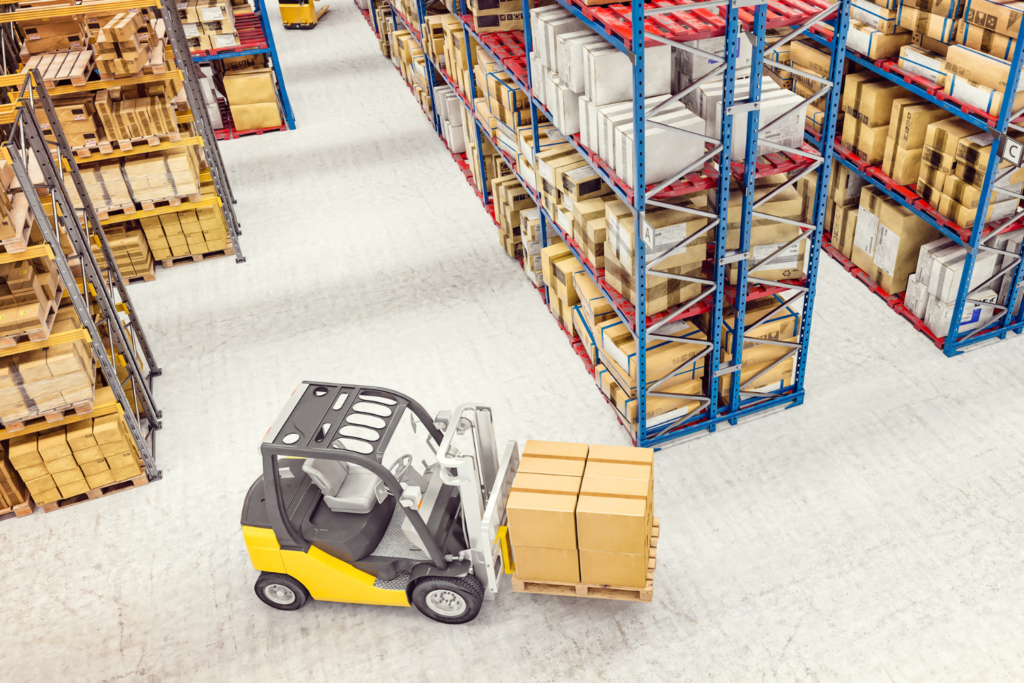
17. Nestable Pallets
Nestable pallets are designed with interlocking feet or bases that allow them to fit into one another when stacked. This feature saves considerable space in storage and transport.
They are usually made of plastic and are commonly used in industries where space efficiency and lightweight solutions are essential, like retail and distribution.
Conclusion
Using the wrong type of pallet can lead to significant problems and financial losses.
For instance, choosing a two-way stringer pallet instead of a four-way block pallet might limit accessibility and maneuverability in warehouses, causing delays in the loading and unloading processes.
Similarly, opting for wooden pallets in an environment that requires strict hygiene standards can lead to contamination risks due to the porous nature of wood.
This could result in product spoilage, regulatory violations, and damage to the company’s reputation.
If you need help with choosing the best pallet type for your needs, contact us.
Chesapeake Pallets has been helping companies across the United States level up their logistics, one pallet at a time.
For inquiries, email info@chesapeakepallets.com or request a quote below!

